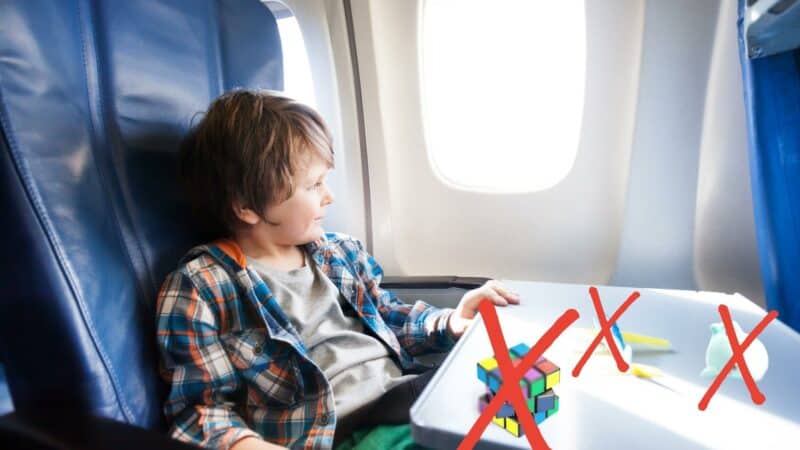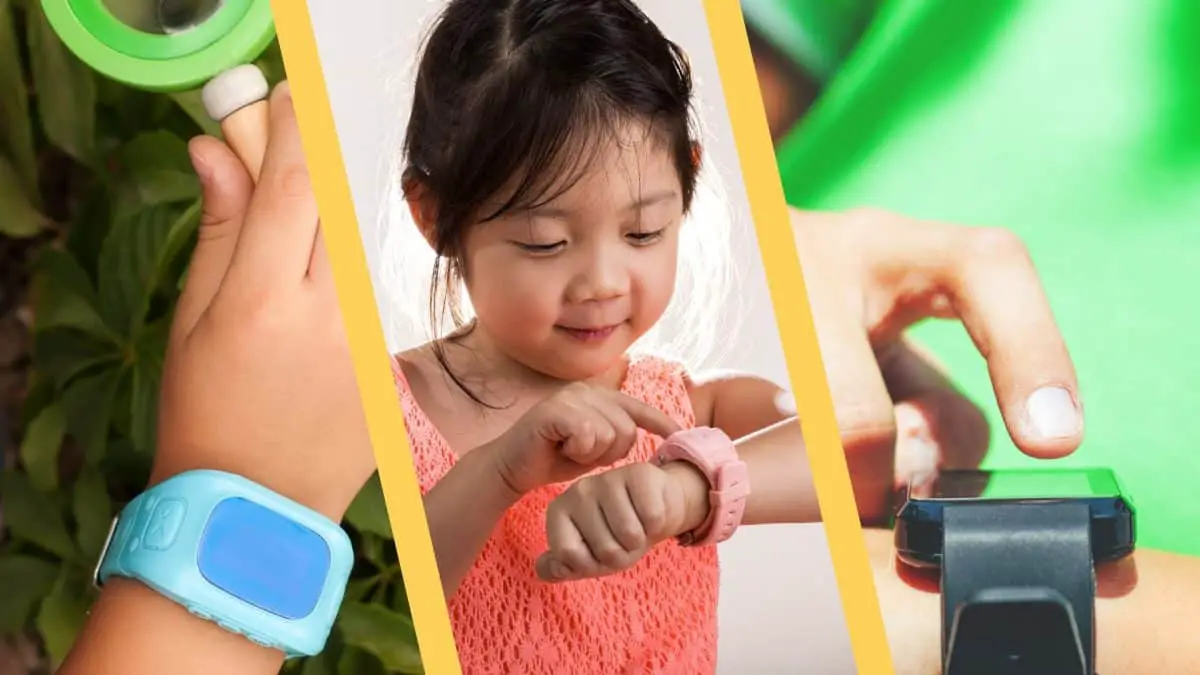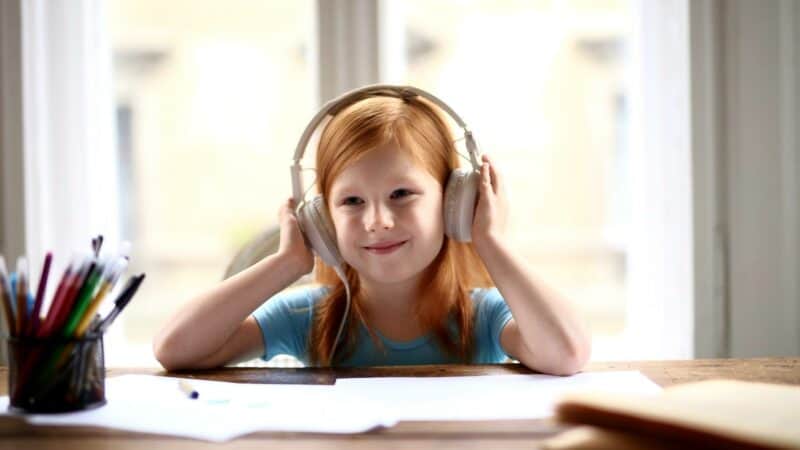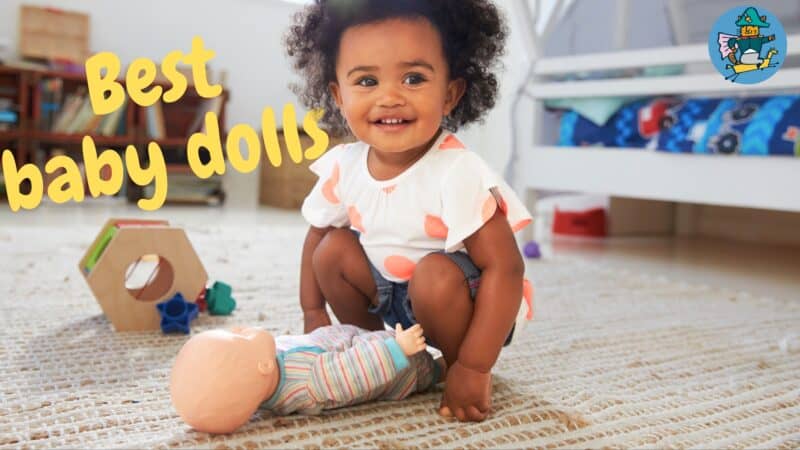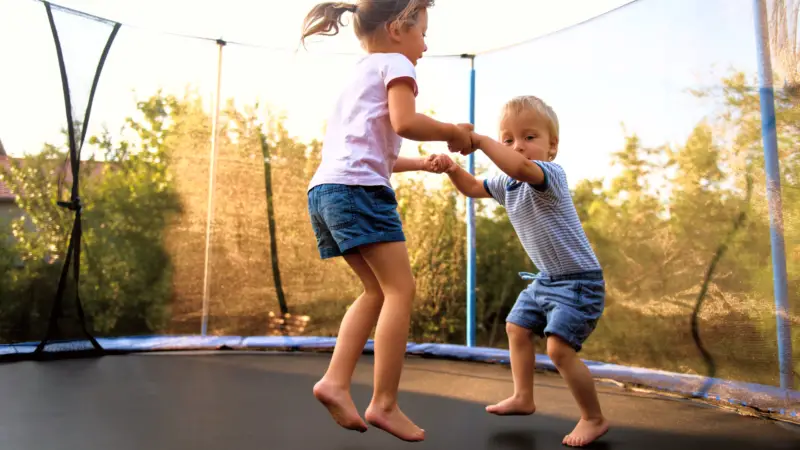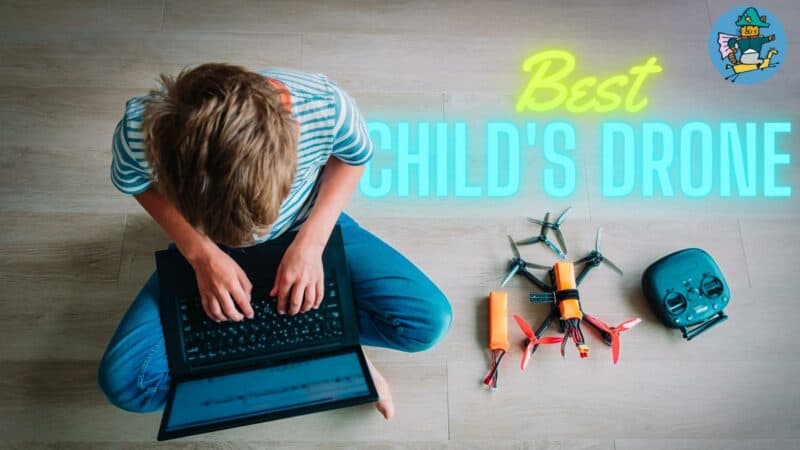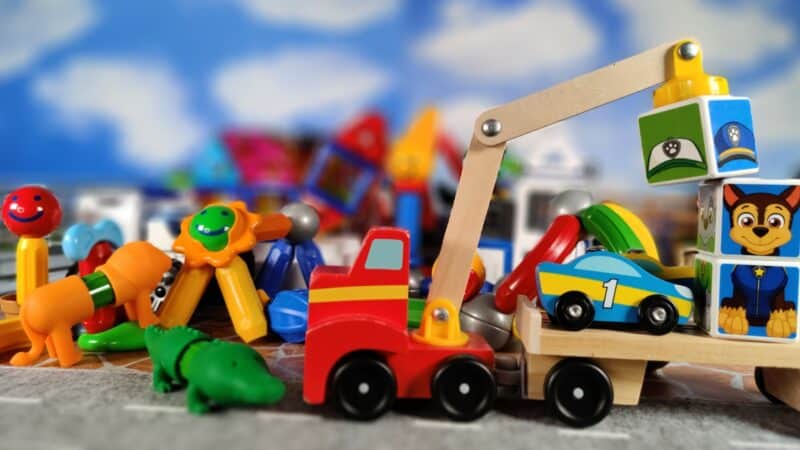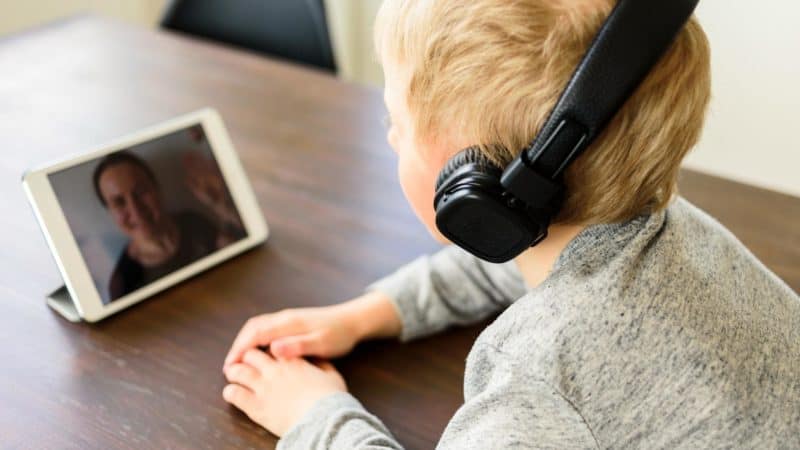At Speelkeuze we use product tests, our own “toy score”, edu score and social score to determine the best toy items for our reviews.
Using a checklist can help you evaluate toys yourself. This way you ensure the right educational value to play with together as a family. By following these steps, you can be sure you're buying the right toy that will provide fun and development.
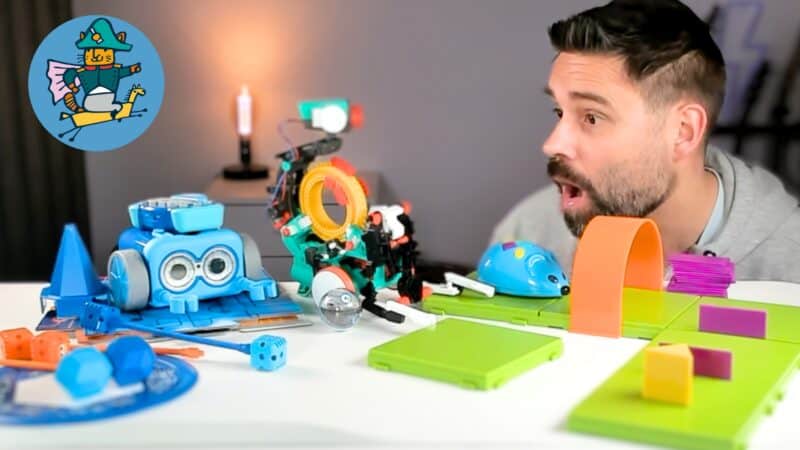
Most Popular Toy Reviews
Below you will find our most popular toy reviews, sorted by most viewed.
How do we conduct product testing for the toys?
We start our reviews by looking for the best candidate toys in a given category. We look at various details and follow a number of steps while assessing the toy. We rank them by toy score, edu score and social score when evaluating the toys.
To determine these scores, I use my own experiences when playing with my son, I always watch how classmates play with it and I also use older or younger friends and nieces and nephews. I also watch a lot of videos of other children playing with it and read other blogs about their experiences.
During testing we pay attention to various aspects, such as the safety of the toy, the design and durability. We check whether the toy meets normal safety standards and whether it is specially designed for children in a specific age group. We also look at the wear and tear of the toy to ensure it can withstand normal use. I record all this data in our toy database.
I'm not afraid to thoroughly test the toys. I want to make sure the toys are of good quality and will last a long time and that we can provide reliable reviews to parents and caregivers looking for quality toys for their children.
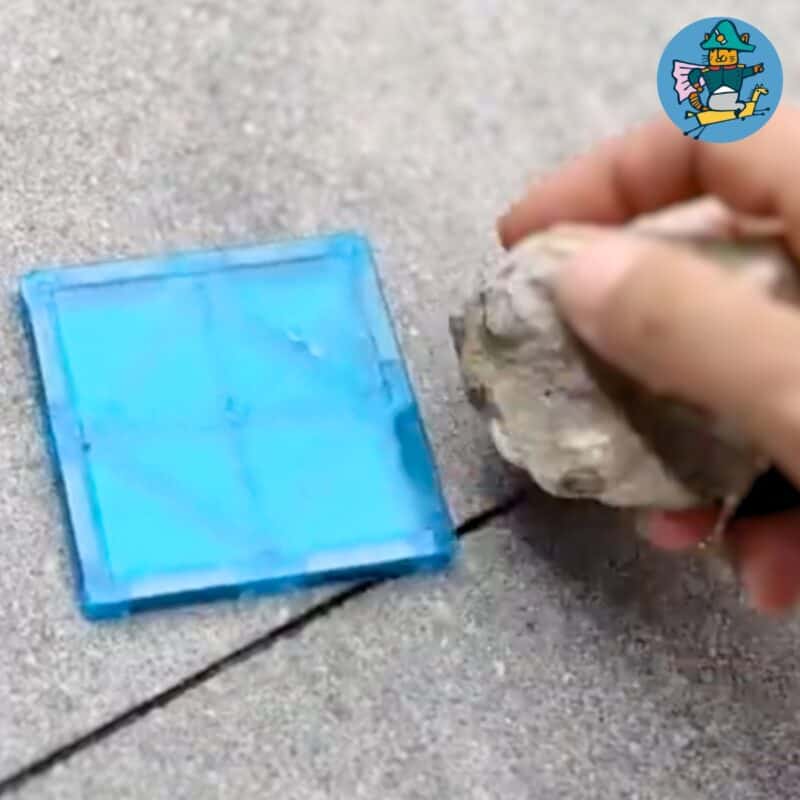
How do we determine the toy score?
The toy score is a quantifiable rating that we assign to toys. We use this figure when ranking the toys in the reviews. This is based on the following components, each with its own weight.
- Play value (30%)
- Price/ quality (30%)
- Replayability (20%)
- Safety (10%)
- Sustainability (5%)
- Materials (5%)
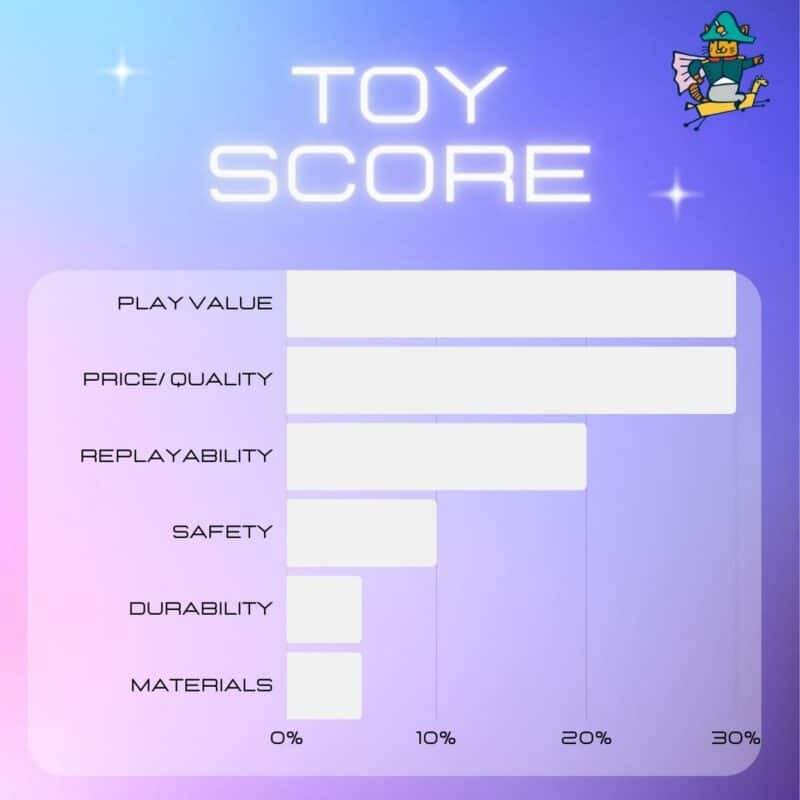
The play value, together with the price-quality ratio, is the most important thing. After all, the toy must be fun to play with and when it's too expensive, no one can afford it.
The play value assesses the product on the features that make it fun to play with. These are ease of use, degree of open-endedness, imagination, social interaction, interactivity, versatility and aesthetics. When a toy is easy to use and understand, is attractive to the child and there are many opportunities to make up your own play with it with open end and imagination, it will be played longer with a higher quality of play.
The value for money is a score based on the ratio of the quality of the toy to the price of the item. This ratio determines how much value you get for your money, in play value and in the intrinsic quality of the item such as the materials used.
Replayability rates the product for features that will ensure it's used again and again. These are ability to combine, portability, longevity, durability and versatility. When the toy can be used everywhere, can also be combined with other toys and lasts a long time, its replayability is high.
The safety assesses the extent to which children can play with it unsupervised. Safety features such as rounded corners, toys that are not too heavy, no small parts, no parts that can easily come loose and non-toxic materials are important here.
Durability scores the toy on how well it can last through play sessions. Sturdy material, but also sturdy connections and fastenings are decisive here.
Materials are understood to mean all the material that is processed in the product. These are the main components, such as the type of wood in wooden toys. Other materials are also included here, such as the type of paint. The environmental friendliness of the materials is also taken into account in this score.
We rate the toys separately on edu score and social score, which are sometimes also used for ranking, depending on the category we are rating.
How do we determine the edu score?
The edu score is a score we assign to a toy that emphasizes its educational value, more than its play value and replayability. We judge the toy based on how many educational benefits it offers, such as promoting cognitive skills, creativity, problem-solving skills and knowledge building.
The edu score takes into account factors such as educational value, educational goals and the extent to which the toy stimulates children to learn and develop and consists of the following components, each with its own weight.
- Educational value (55%)
- Replayability (15%)
- Play value (10%)
- Price/ quality (10%)
- Awards (10%)
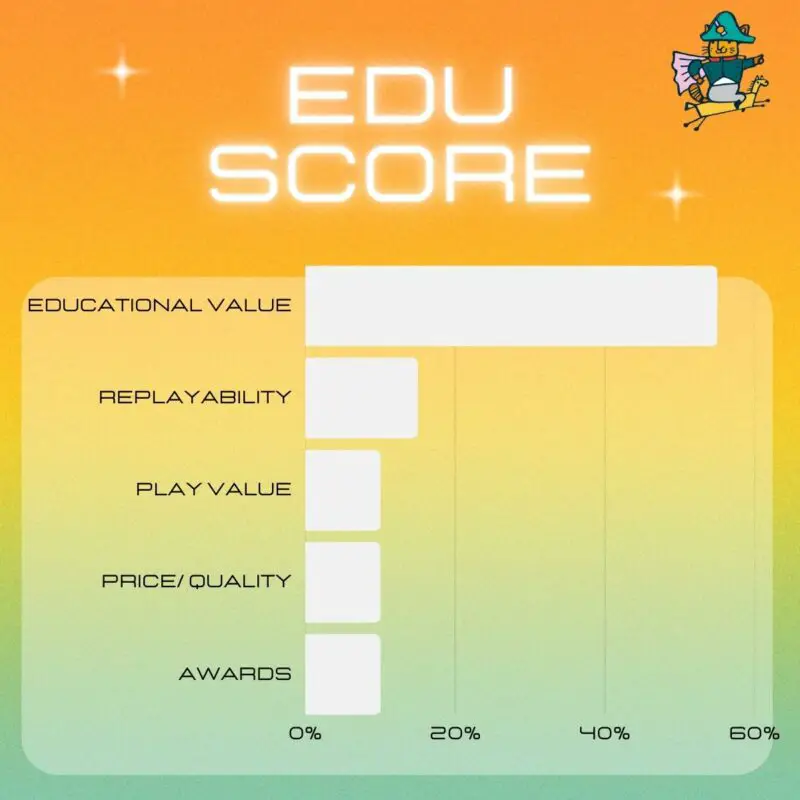
The educational value is by far the most important here. How good is the toy at teaching skills. Of course, each toy teaches a different skill, or several at a time. That is why we always look at the learning objective.
Replayability, play value and price-quality ratio are also important with the edu score. If a child does not want to play with the toy, it may be educational, but it will not provide many educational benefits. That is why replayability is slightly more important here than play value.
Awards for the toys are also very important. This indicates whether it has been recognized by reputed institutions to ensure that it brings the right educational value.
How do we determine the social score?
The social score is a rating we assign to toys that looks at the social impact, such as sustainable materials, any awards a brand has received and the brand's reputation, each with its own weight.
- Sustainability (30%)
- Materials (25%)
- Gender inclusivity (15%)
- Cultural representation (15%)
- Brand reputation (10%)
- Awards (5%)
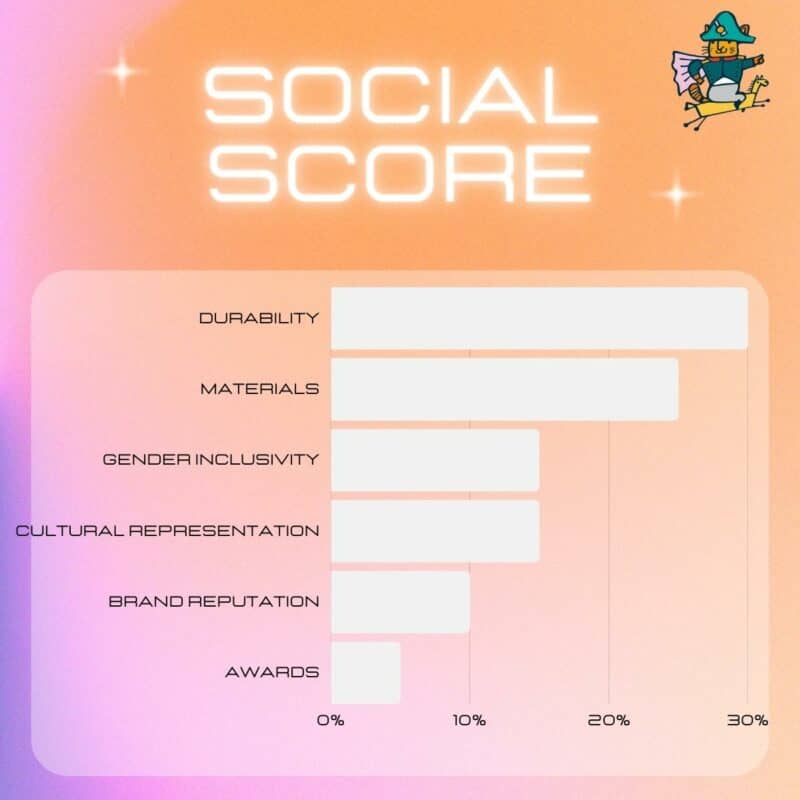
The sustainability and materials used are the most important here, as this clearly reflects the environmental impact on our society. This is one of the most important social drivers for contemporary toys.
In addition to the environment, representation and support of both gender and culture is also an important topic. Toys that actively contribute to inclusivity or breaking stereotypes score high on this.
Brand reputation is also an important factor here. Brands that stand for something that helps our society and have not been put in a bad light regarding things such as poor production practices are the winners here.
Awards are also important here because they are often given to toys and brands that make a difference in the social field.
We rate the toys separately on edu score and social score, which are sometimes also used for ranking, depending on the category we are rating.
How do we determine the game score?
Games, such as board games or video games, cannot be assessed on the same points as toys. We have therefore developed a separate game score, a quantifiable assessment that we use when ranking games in our reviews. This is based on the following components, each with its own weight.
- Play value (35%)
- Interactivity (20%)
- Price/ quality (20%)
- Versatility (15%)
- Awards (5%)
- Materials (5%)
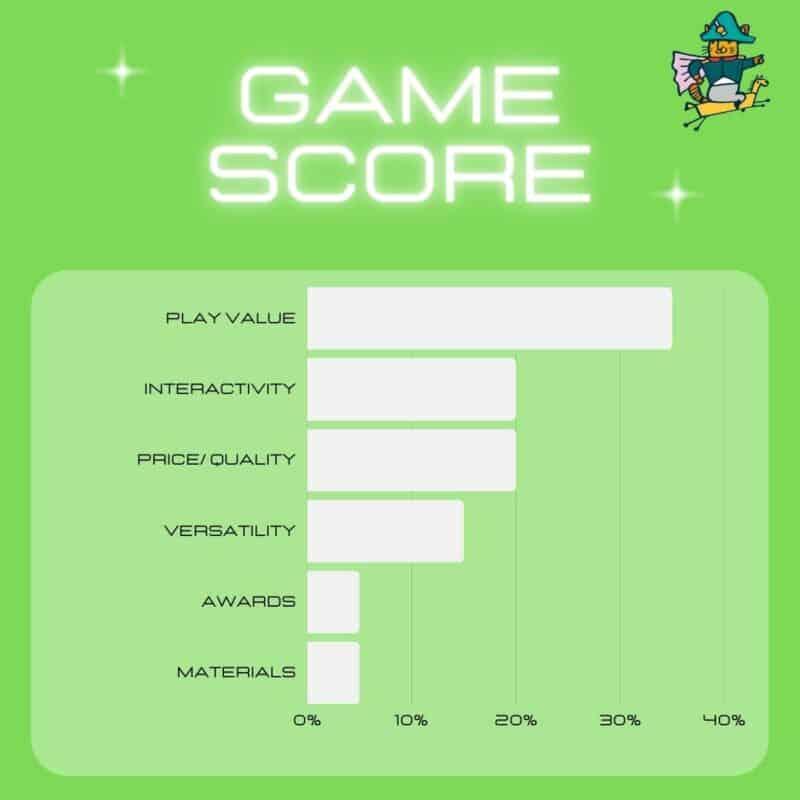
The play value, together with the interactivity, is the most important thing. The games should be fun to play and interactivity is also an important part of this.
The play value here is also the ease of use, degree of open-endedness, imagination and social interaction. When a game is easy to use and understand or has a logical learning curve and there are many options to give it your own direction, it will be played longer with a higher quality of game.
Interactivity is the extent to which the game involves the players and immerses them in it. This is very important for the quality of play and how often children will return to the game to play it more often.
The value for money is a score based on the ratio of the quality of the game to the price of the item. This ratio determines how much value you get for your money, in play value and in intrinsic quality of the item such as the materials used.
The versatility is how many directions you can take the game in. If there is only one possible outcome and the game always follows the same steps, then the versatility is low. If there are multiple outcomes possible, multiple ways of playing, multiple ways to win and, for example, multiple characters that influence the game, then the versatility is high.
Awards for the game are also important. This indicates whether it has been recognized by reputed institutions to ensure that it brings the right play value or sometimes educational value.
Materials are understood to mean all materials incorporated into the product. These are the main components such as cardboard or plastic for a game board or real wooden playing pieces.
How do you evaluate toys yourself?
To evaluate a toy for yourself, look at the most important things below.
- Safety: Check that the toy has no sharp edges or small parts that could be dangerous to young children.
- Educational value: Assess whether the toy promotes skill development and learning.
- Durability: Check whether the toy can withstand rough play and wear and tear.
- Interest: Make sure the toy can hold and manipulate the child's interest.
- Suitability for age: Check that the toy is suitable for the child's age. Usually the age limit is stated, this is a good indication. 3+ in particular is very important because it contains small parts or parts that can come loose that smaller children can still put in their mouths.
- Versatility: Can it be played with in different ways?
Also read our articles about these different aspects.
If you want to look specifically at the safety of the toys, there is this visual checklist that can help you with this.

With these tips, you can even write toy reviews to help others choose toys.
How do you write a toy review?
To write your own toy review, take an example of how Play Choice does it. Describe in detail different aspects of the toy and explain why they are important to include.
A thorough toy assessment should include the following elements.
- On what points do you assess? Define the criteria used to rate toys, and establish clear standards for ranking different options.
- What characteristics of the toy determine these points? Specify the characteristics considered when applying the assessment criteria to the toy, to ensure a structured and consistent assessment process.
- How do you play with it? Clearly explain what you can do with the toys and how you play with them. Explain any special features such as what buttons do and how to get the most educational value out of them.
- What was your experience? Tell us about your experience with the toys. How does the quality feel, how fun was it to play with it. Talk about the parent-child interaction. Was it fun for you too or just the child? Also use opinions from others who have the toy or have tried it with you, such as children, parents, grandparents or teachers.
- What did you see in the children? Describe how children played with it. Which learning objectives emerged well and, in particular, how long they played with them. Could they play with it independently or only with you?
- Which images best illustrate these findings? Create images that best illustrate the points you made earlier. You often see meaningless images of the toys that are in the room or that are being played with. It is better to highlight a specific point in your review with the right photo.
- Price, age range and availability: Provide information about the price of the toy, the recommended age range, including a link where parents can purchase the product.
How do you make sure you buy the right toys for playing together as a family?
To ensure you buy the right toys for family play, there are a few important steps you can follow.
- Consider the interests and developmental needs of each family member. Choose toys that suit each family member's age and abilities, and that pique their interest.
- Choose toys that are educational and developmental. Toys that promote learning and development keep every family member engaged and having fun while playing.
- Make sure the toys are safe and appropriate for each family member's stage of development. Look at the recommended age and check that the toy does not contain small parts that could pose a choking hazard.
- Choose toys that are durable and will last a long time. This ensures that the toy can be used regularly and in a fresh way, keeping the playing experience interesting.
- Provide a varied playing environment. Make sure there is a variety of toys available so that every family member has access to different types of play experiences.
By taking these tips and considerations into account, you can ensure that you get the right toy to to play together as a family. This provides a meaningful and enjoyable play experience, while promoting the development and growth of each family member.
How do you ensure that your child learns from their toys?
To ensure that your child learns from their toys, choose toys that combine and stimulate playing and learning. Encourage your child to play with the toys and ask questions to stimulate their thinking.
Make sure the toys are suitable for your child's age and stage of development. Offer a variety of toys to develop different skills. Make sure the toys are safe and promote social interaction by playing together with your child.
Also provide a stimulating play environment in which your child can experiment and discover. By considering these factors you can ensure that you child learns in a fun and game-based way of his toys.
What should you look for for educational toys?
Choose toys that maintain the child's interest and promote interaction and communication. These are all important aspects of educational toys.
When buying educational toys you should pay particular attention to toys that are suitable for the child's age and stage of development. Choose toys that encourage multiple skills, such as music, social interaction and motor skills.
